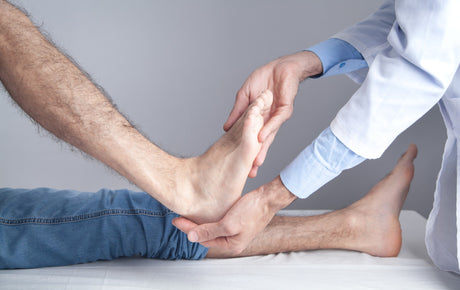Calluses, also known as clavi, are small, raised bumps or hardened areas of skin that typically appear on the toes, soles of the feet, or heels. These skin thickening can be painful and uncomfortable, especially when pressure is applied, such as when wearing shoes. While calluses are not dangerous, they can cause irritation and inflammation if not treated properly. In this article, we’ll cover the causes of calluses, effective treatment methods, and preventive measures to help keep your feet healthy and pain-free.
What are calluses and what causes them?
Calluses form as a result of prolonged pressure or friction on the skin, leading to thickening and hardening of the skin in the affected area. Common causes of calluses include:
- Tight or ill-fitting shoes: Shoes that are too small, too big, or too rigid can cause pressure on specific areas of the foot.
- Foot problems: Foot deformities, such as hammertoes or flat feet, can increase the likelihood of developing calluses.
- Prolonged pressure: For example, if you walk a lot on hard surfaces or stand in one position for extended periods, the pressure on your feet can lead to calluses.
Symptoms of calluses
Calluses typically feel like small bumps on the skin and can be painful when pressure is applied. They may also have a yellowish, waxy, or scaly appearance and usually develop on the toes, heels, or soles of the feet. In some cases, calluses may cause irritation or inflammation, making walking or standing uncomfortable.
How to effectively treat calluses
To reduce discomfort and remove calluses, several treatment methods can help. Depending on the severity of the callus, you can use different techniques to relieve pain and allow the skin to recover.
1. Callus removal by scraping
For larger or more painful calluses, professional scraping may be necessary. This should only be done by a doctor or podiatrist to avoid infection or injury to the skin.
2. Filing calluses at home
A simple method for treating smaller calluses is to file them down using a pumice stone. Follow these steps:
- Soak your feet: Soften the skin by soaking your feet in warm water for about 10 minutes.
- File gently: Use a pumice stone to gently file away dead skin in circular or side-to-side motions.
- Be cautious: Avoid removing too much skin, as this could lead to bleeding or infection.
Important: When using treatments that contain salicylic acid, be cautious if the callus is cracked or if you have sensitive skin. People with diabetes or circulatory issues should consult a doctor before using these products.
Preventive measures for calluses
The best way to manage calluses is to prevent them from forming in the first place. Here are some effective preventive measures:
- Choose the right shoes: Wear shoes that fit properly and do not cause friction. Avoid shoes that are too tight or too rigid.
- Use cushioning: Mollskin or protective pads can help reduce friction on sensitive areas of the foot.
- Orthotic insoles: For people with foot problems, orthopedic insoles can help reduce pressure on specific areas of the foot.
- Keep feet moisturized: Regularly moisturize your feet to prevent the skin from becoming dry and hard.
Looking for effective solutions to treat calluses and take care of your feet? Explore our range of foot care products, including foot files, moisturizers, and more, designed to help you achieve smooth, healthy feet.
When should you seek medical care?
In most cases, calluses are harmless and can be treated at home. However, there are situations when you should seek professional medical care:
- Persistent pain or severe inflammation: If the calluses cause ongoing pain or the inflammation doesn't subside, it may be time to see a doctor.
- Uncertainty about diagnosis: If you’re unsure whether it’s a callus or another skin issue, it’s best to seek a medical evaluation.
- Recurring calluses: If calluses keep recurring, it could be due to foot deformities or gait abnormalities that need to be addressed.
- Diabetes or circulatory issues: If you have diabetes or poor circulation, consult a doctor before starting any treatment for calluses.
In rare cases, surgery may be required to remove calluses or correct underlying foot problems causing them.
Taking care of your feet
Calluses are common, but by following the right treatment methods and preventive measures, you can keep your feet healthy and pain-free. Choose the right shoes, use protective insoles, and regularly care for your feet to avoid calluses and other foot issues. If calluses cause long-term pain or you have underlying foot problems, seek medical care for the best results.



